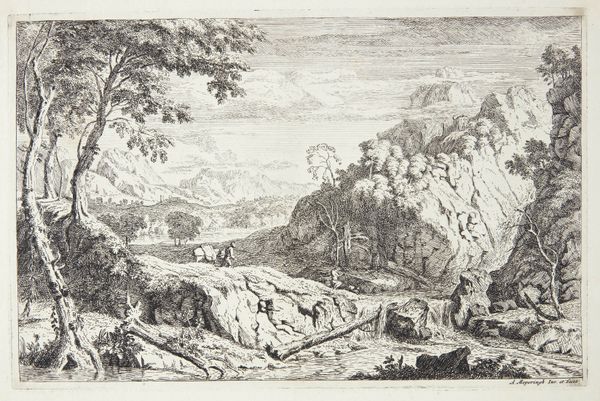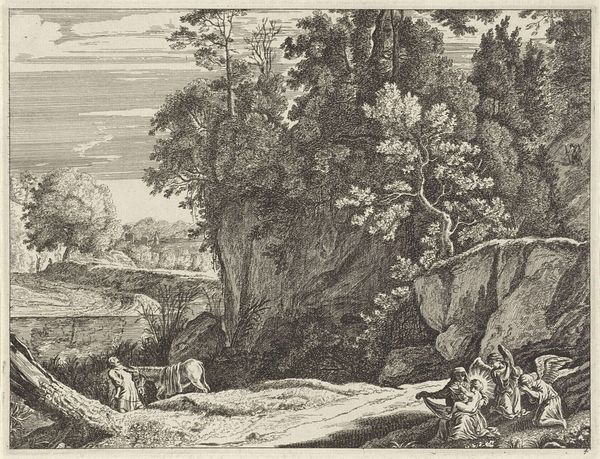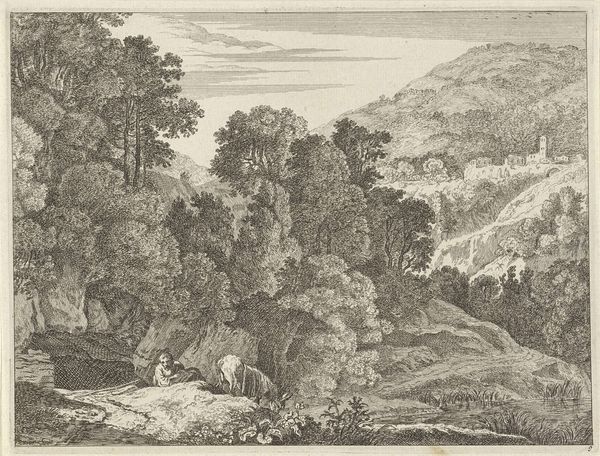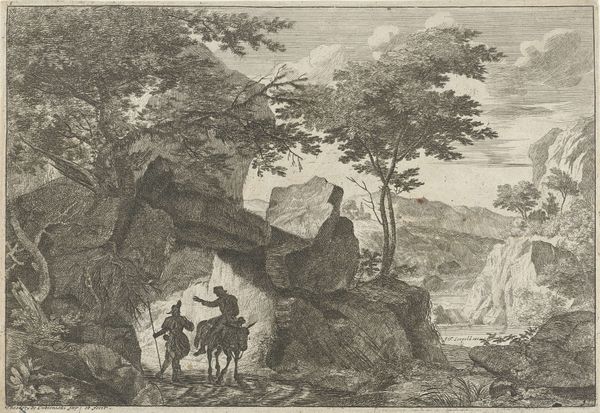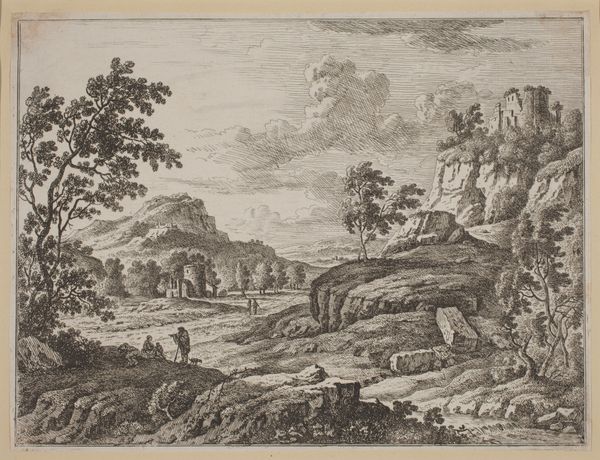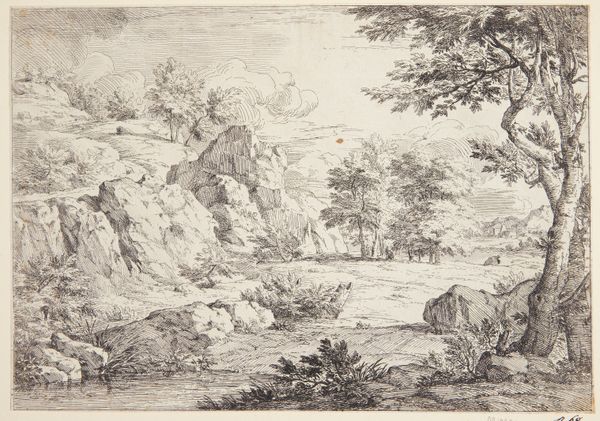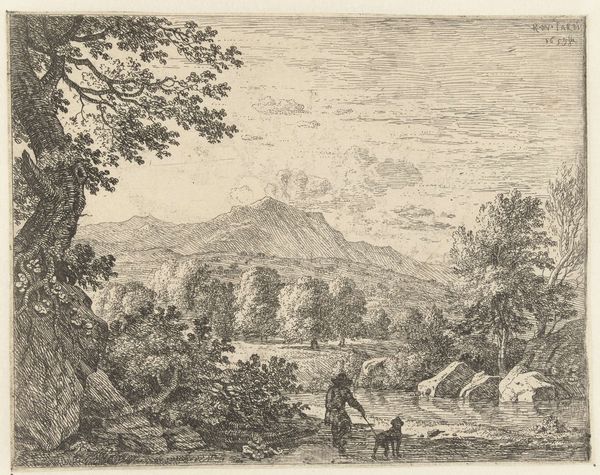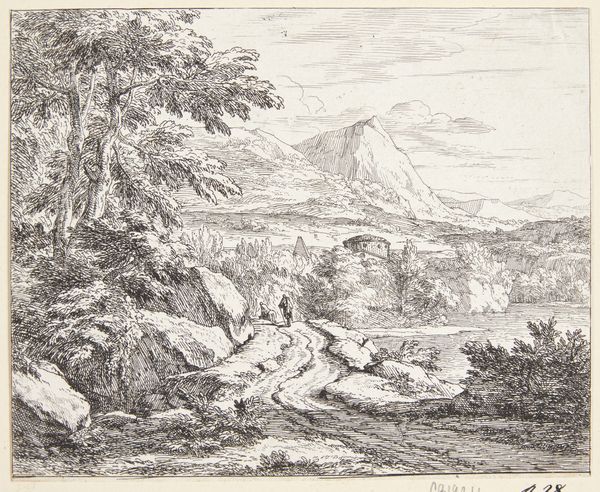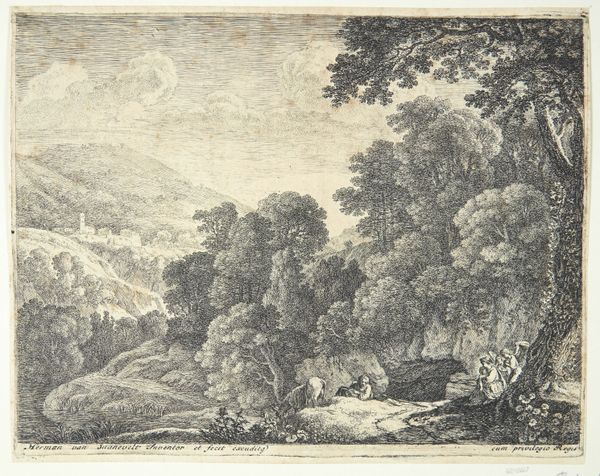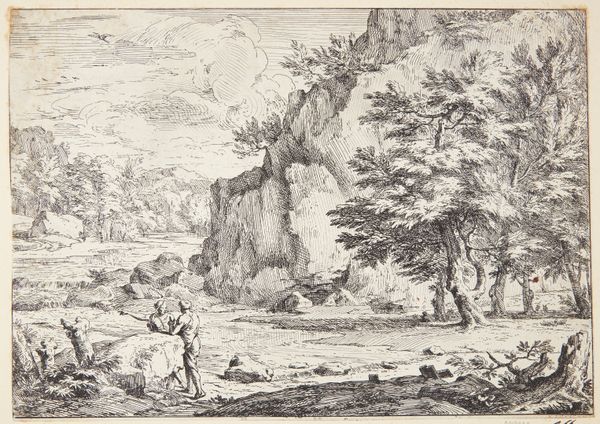
Dimensions: 9 3/4 × 13 1/4 in. (24.8 × 33.7 cm)
Copyright: Public Domain
Curator: Johann Elias Ridinger’s "Stags in a Landscape" dates sometime between 1710 and 1767. It’s an etching and engraving, currently residing here at the Met. The monochromatic palette feels quite serene, almost sepia-toned. What are your first impressions? Editor: It's striking how meticulously rendered this idyllic scene is. It reminds me of tapestries from the period, which were such significant signifiers of status and power. The very deliberate process feels aligned with the luxurious materials used for those types of artworks. Curator: Indeed. Ridinger's work circulated widely as prints, democratizing access to such imagery. He trained in Augsburg, a significant center for printmaking at the time. It was all about dissemination—craft serving the public. He capitalized on it. Editor: That’s an interesting observation given the era's political climate and how art often served as propaganda. These prints, accessible to a broader audience, could subtly reinforce the status quo or project a certain ideal of pastoral harmony, even if removed from the lived realities of many. How did its popularity influence similar artistic outputs? Curator: The key element here is labor, the artist himself and his assistants producing images for an expanding market. Ridinger established his own publishing house, a savvy move. The subject matter itself, often hunting scenes or animal studies, catered to the aristocracy’s interests. His focus on naturalistic detail also influenced later animaliers, artists specializing in animal subjects, further embedding a specific aesthetic associated with leisure and class. Editor: The "naturalistic detail" you mention is fascinating when considering the historical context. Landscape paintings from this era often presented a highly curated and controlled vision of nature, reflecting humanity's dominance. This image contributes to an ideal, shaped, landscape and further a specific type of societal interaction with nature. The consumption of art reflects the consumers. Curator: Precisely. Think about the materiality of the print itself – paper, ink, the physical act of pressing the image – all crucial to its accessibility and distribution. A shift from singular artworks to reproducible commodities really highlights the changing dynamics of art and its audience. Editor: Reflecting upon its lasting influence and its role within the grand narrative of art history has given me a new perspective on this landscape print. Curator: Me too, actually. It’s quite remarkable how deeply such a seemingly simple image reflects shifts in the social, artistic, and economic landscapes.
Comments
No comments
Be the first to comment and join the conversation on the ultimate creative platform.

